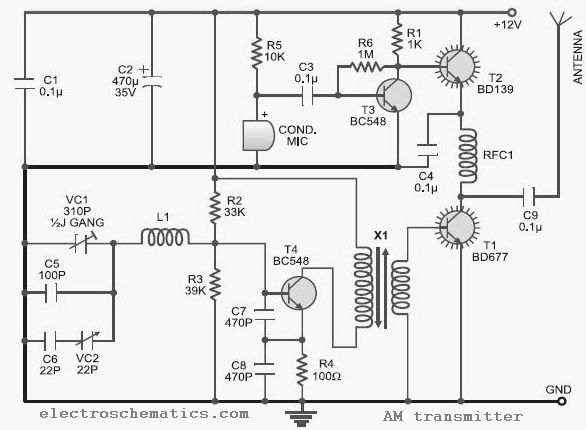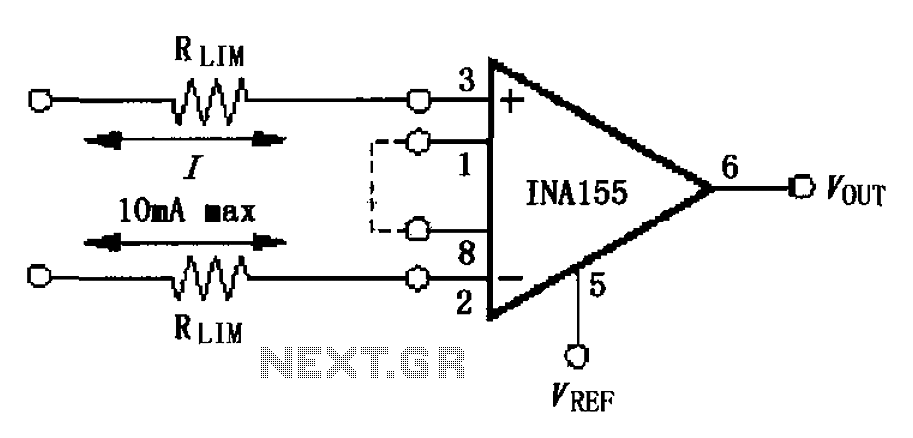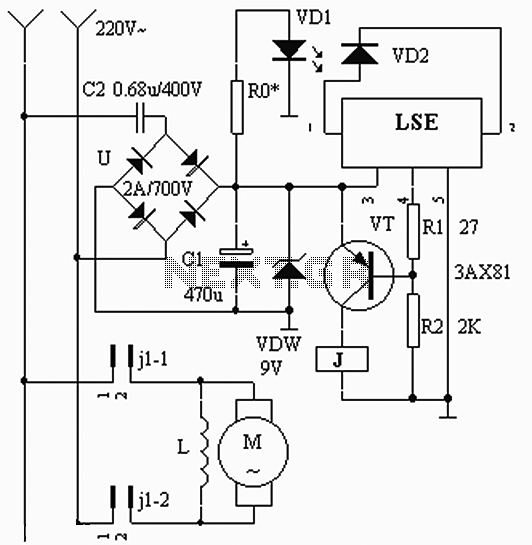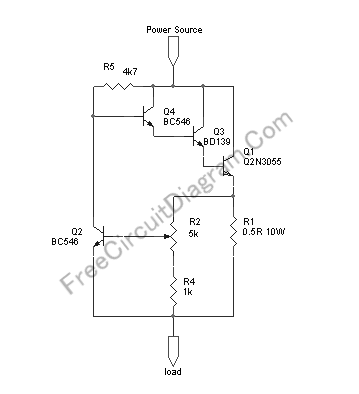
10 to 15 MHz AM Transmitter Circuit

This low-cost AM transmitter is tunable from 10 to 15 MHz with the assistance of a ½J gang condenser VC1, which sets the carrier frequency of the amplitude modulation transmitter in conjunction with inductor L1. Frequency trimming can be performed using VC2. The carrier signal is amplified by transistor T4 and coupled to the RF amplifier transistor T1 (BD677) through transformer X1. The AM radio transmitter operates without a modulator transformer. The audio output from the condenser microphone (MIC) is preamplified by transistor T3 (BC548). The output from T3 is further amplified by transistor T2 (BD139), which modulates the RF amplifier built around transistor T1 by varying the current through it in accordance with the amplitude of the audio signal. RFC1 is utilized to block the carrier RF signal from transistor T2 and the power supply.
This AM transmitter circuit operates within the frequency range of 10 to 15 MHz, making it suitable for various amateur radio applications. The use of a ½J gang condenser (VC1) allows for precise tuning of the carrier frequency, while inductor L1 works in conjunction with VC1 to establish the desired frequency. The additional frequency trimming capability provided by VC2 ensures that the output remains stable and accurate.
The signal amplification is achieved through a series of transistors, starting with T4, which amplifies the carrier signal. The RF amplifier stage, based on transistor T1 (BD677), is crucial for boosting the RF signal to a level suitable for transmission. Transformer X1 plays a vital role in coupling the amplified carrier signal to the RF amplifier while providing isolation between stages.
The audio input, captured by the condenser microphone, is first preamplified by transistor T3 (BC548). This preamplification is essential for ensuring that the audio signal is strong enough for further processing. The amplified audio signal is then fed into transistor T2 (BD139), which modulates the RF signal produced by T1. The modulation process involves varying the current through T1 based on the amplitude of the audio signal, effectively encoding the audio onto the RF carrier wave.
RFC1 serves an important function in the circuit by blocking any unwanted RF signals from T2 from reaching the power supply, thereby preventing interference and ensuring stable operation of the transmitter. This design demonstrates an efficient and cost-effective approach to building an AM transmitter suitable for hobbyists and educational purposes in radio communications.This low-cost AM transmitter is tunable from 10 to 15 MHz with the help of ½J gang condenser VC1, which determines the carrier frequency of the amplitude modulation transmitter in conjunction with inductor L1. The frequency trimming can be done with VC2. The carrier is amplified by transistor T4 and coupled to RF amplifier transistor T1 BD677 thr ough transformer X1. The AM radio transmitter does not use any modulator transformer. The audio output from condenser MIC is preamplified by transistor T3 (BC548). The audio output from T3 is further amplified by transistor T2 (BD139), which modulates the RF amplifier built around transistor T1 by varying the current through it in accordance with the audio signal`s amplitude. RFC1 is used to block the carrier RF signal from transistor T2 and the power supply. 🔗 External reference
This AM transmitter circuit operates within the frequency range of 10 to 15 MHz, making it suitable for various amateur radio applications. The use of a ½J gang condenser (VC1) allows for precise tuning of the carrier frequency, while inductor L1 works in conjunction with VC1 to establish the desired frequency. The additional frequency trimming capability provided by VC2 ensures that the output remains stable and accurate.
The signal amplification is achieved through a series of transistors, starting with T4, which amplifies the carrier signal. The RF amplifier stage, based on transistor T1 (BD677), is crucial for boosting the RF signal to a level suitable for transmission. Transformer X1 plays a vital role in coupling the amplified carrier signal to the RF amplifier while providing isolation between stages.
The audio input, captured by the condenser microphone, is first preamplified by transistor T3 (BC548). This preamplification is essential for ensuring that the audio signal is strong enough for further processing. The amplified audio signal is then fed into transistor T2 (BD139), which modulates the RF signal produced by T1. The modulation process involves varying the current through T1 based on the amplitude of the audio signal, effectively encoding the audio onto the RF carrier wave.
RFC1 serves an important function in the circuit by blocking any unwanted RF signals from T2 from reaching the power supply, thereby preventing interference and ensuring stable operation of the transmitter. This design demonstrates an efficient and cost-effective approach to building an AM transmitter suitable for hobbyists and educational purposes in radio communications.This low-cost AM transmitter is tunable from 10 to 15 MHz with the help of ½J gang condenser VC1, which determines the carrier frequency of the amplitude modulation transmitter in conjunction with inductor L1. The frequency trimming can be done with VC2. The carrier is amplified by transistor T4 and coupled to RF amplifier transistor T1 BD677 thr ough transformer X1. The AM radio transmitter does not use any modulator transformer. The audio output from condenser MIC is preamplified by transistor T3 (BC548). The audio output from T3 is further amplified by transistor T2 (BD139), which modulates the RF amplifier built around transistor T1 by varying the current through it in accordance with the audio signal`s amplitude. RFC1 is used to block the carrier RF signal from transistor T2 and the power supply. 🔗 External reference





